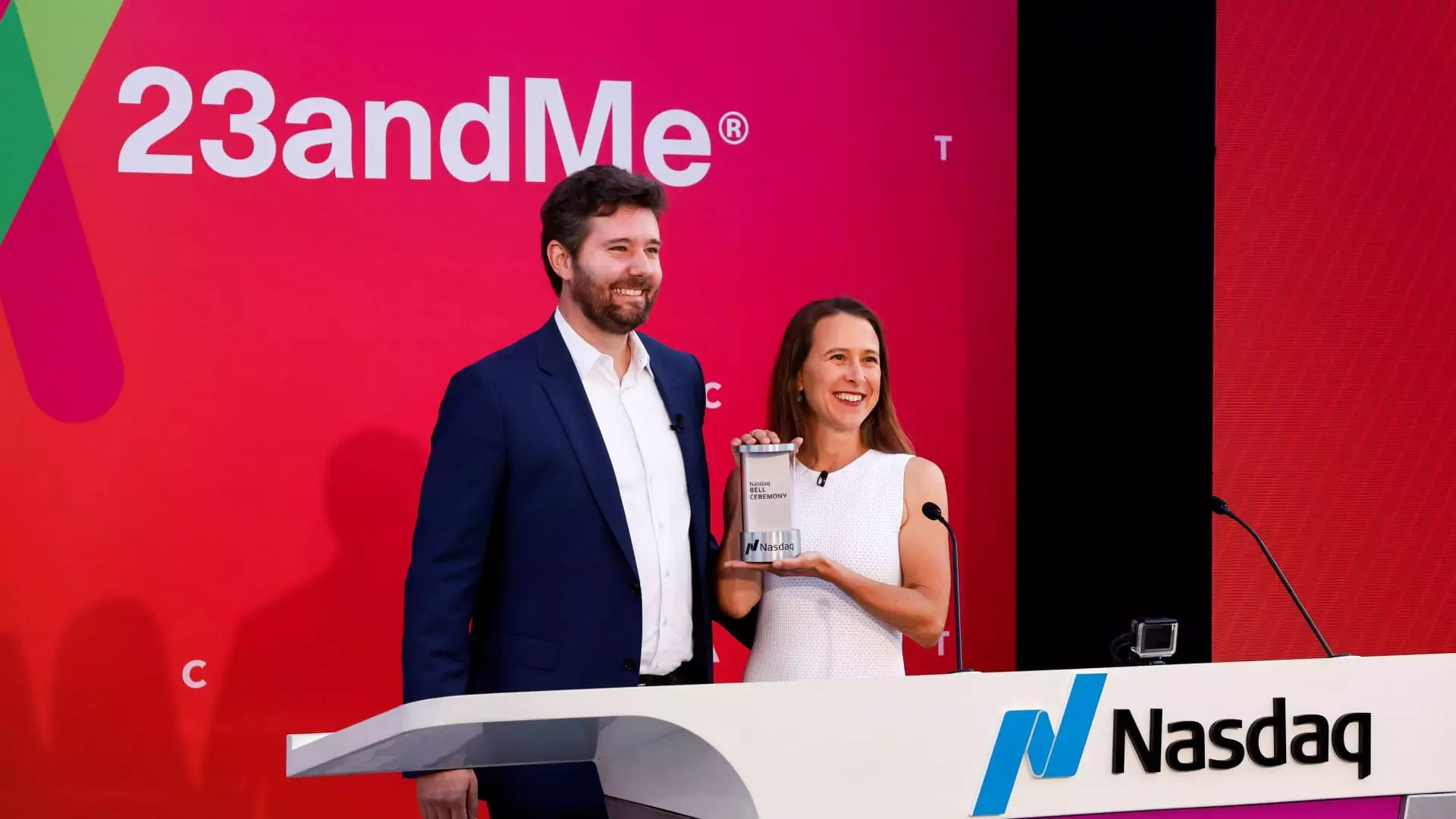Founded in 2006, 23andMe once held the promise of transforming the genetic testing landscape by democratizing access to personal genomics. With an innovative direct-to-consumer model, the company sought to make genetic testing affordable and accessible, contrasting sharply with the traditional, exclusive practices of the industry. Supported by prominent investors and celebrity endorsements, 23andMe captured public attention and investment, rapidly becoming a household name within the realm of personal genetics. The ambition was grand—their aim to not only empower individuals with knowledge about their genetic makeup but to utilize that data for groundbreaking drug discovery initiatives.
The Financial Ascent: A Promising Start
The company’s ambitious trajectory saw it going public in 2021 with a valuation that peaked at approximately $3.5 billion. Under the leadership of Anne Wojcicki, the vision for 23andMe extended beyond simple genetic testing; it aspired to integrate drug research with their vast database of genetic information. Wojcicki exuberantly expressed optimism to CNBC, declaring that the company was at a pivotal moment ripe with opportunities not only in therapeutic applications but also within the consumer genetics sector. Unfortunately, this optimism would prove short-lived.
Just as the company seemed poised for success, external factors began to derail its formidable ascent. An increase in interest rates tightened capital markets, complicating efforts to secure funding. Sales, once vibrant, started to wane, leading to a troubling financial outlook. 23andMe attempted to counter declining revenues by introducing a premium subscription service in 2020, but the strategy failed to deliver the expected results. Ultimately, the company reported a staggering $312 million net loss for the fiscal year 2023, with share prices plummeting below the $1 mark by September 2023.
Internal conflicts compounded these challenges, as evidenced by the mass resignation of the board’s independent directors. This exodus underscored frustrations regarding Wojcicki’s strategic vision for the company, suggesting that disagreements over the direction of 23andMe ran deep. Wojcicki’s ambition to transform 23andMe into a powerhouse for drug research and consumer services seemed increasingly disconnected from the realities posed by its faltering financial situation.
Compounding the company’s troubles were growing concerns over customer privacy. An alarming incident emerged in October 2023, when hackers breached the data of nearly 7 million customers. This type of breach poses serious risks—not just to customer trust but to the fundamental operational model of a company reliant on sensitive genetic data. Despite Wojcicki’s reassurances about commitment to customer privacy, the breach served as a stark reminder of the potential vulnerabilities associated with handling genetic information on such a large scale.
Wojcicki’s proposal to take the company private appeared as an attempt to regain control amidst turbulent waters. However, the proposal was ultimately rejected, revealing further fractures within the company’s leadership. With independent directors departing in frustration and a severe financial crisis looming, 23andMe faced an uncertain future.
As the company approaches a critical deadline in November 2023 to stabilize its share price and renew its board, the question looms: Can 23andMe recover from its precarious position? The path forward is fraught with uncertainty, not only due to internal leadership challenges but also in light of the broader industry climate. The quest for innovation in genomics carries with it both exceptional potential and exceptional risks, as evidenced by 23andMe’s downward spiral from a darlings of the tech world to a cautionary tale of ambition meeting unyielding reality.
In examining 23andMe’s rapid rise and troubling fall, significant lessons emerge regarding the intersection of innovation, market pressures, and ethical responsibilities. As the company navigates this precarious terrain, it serves as a poignant reminder of the multifaceted challenges that define the ever-evolving landscape of genetic testing and biotechnology. Whether 23andMe can reclaim its pioneering spirit or remains a relic of what could have been will be a story worth following, as the need for thoughtful governance and consumer trust in health tech becomes increasingly paramount.

